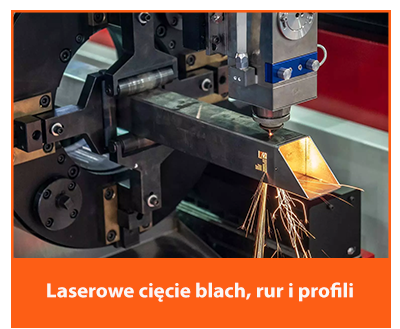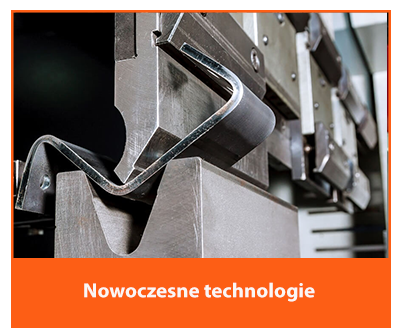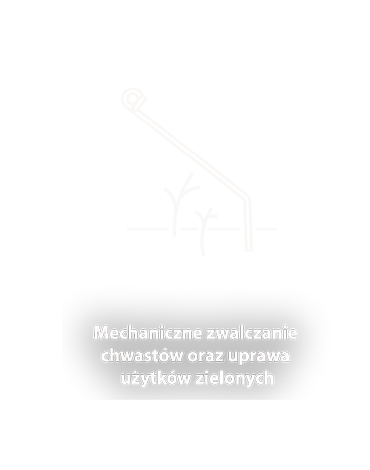

Blog
Brona talerzowa jak wybrać właściwą.
Talerzowanie - wszystko, co musisz wiedzieć o tym zabiegu agrotechnicznym
Dlaczego brona talerzowa powinna się znaleźć w każdym gospodarstwie rolnym?
Brona talerzowa to maszyna uniwersalna?
Jak dobrać rodzaj brony talerzowej do upraw?
Która brona na ścierniska, jaką wybrać do upraw przedsiewnych?
Czy są brony uniwersalne, do każdego typu uprawy?
Jaki najlepszy kształt talerza wybrać?
Średnica talerza, czym większy tym lepszy?
Amortyzator gumowy czy sprężynowy?
Odległości między narzędziami roboczymi?

Maszyna uniwersalna i bardzo przydatna w gospodarstwie
Bez jakiej maszyny trudno wyobrazić sobie dzisiaj funkcjonowanie gospodarstwa? Z pewnością bez brony talerzowej. Czy zatem każda talerzówka sprawdzi się we wszystkich warunkach? Na pewno nie, a więc jaką kupić do swojego gospodarstwa? Brona talerzowa to z pewnością jedna z najpopularniejszych maszyn uprawowych. Przebojem wdarła się do parków maszynowych wielu gospodarstw, gdzie skutecznie zastąpiła przestarzałe i mało wydajne pługi podorywkowe. Okazuje się jednak, że oprócz uprawy pożniwnej ma ona zdecydowanie szersze zastosowanie. Do zalety stosowania bron talerzowych niezaprzeczalnie należy zaliczyć stosunkowo nieduże zapotrzebowanie na moc ciągnika, bardzo niską podatność na zapychanie nawet przy dużej ilości resztek pożniwnych oraz dobrą jakość mieszania gleby. To chyba wystarczająca ilość powodów, aby przemyśleć zakup takiej maszyny od Rolmako.

Do czego służy brona talerzowa?
Brona talerzowa to grupa dysków umieszczonych na osi i obracających się podczas pracy ciągnika. Jej budowa opiera się na 2 belkach, na których zamocowane są tzw. talerze, czyli dyski o charakterystycznym kształcie. Elementy robocze obracając się spulchniają i rozdrabniają ziemię. Taki zabieg jest bardzo wskazany po orce, żeby rozdrobnić zbite bryły ziemi lub po zasiewach, aby materiał siewny przykryć odpowiednią warstwą gleby. Brony bardzo przydają się również w walce z chwastami przy tzw. podorywce, czyli płytkiej orce. Kolejnym sposobem ich zastosowania jest mieszanie z glebą rozsianych nawozów mineralnych czy obornika. Brona talerzowa pracuje na głębokości 5–15 cm. W zależności od kąta ustawienia jej talerzy w stosunku do kierunku ruchu jej intensywność pracy może być różna. Przykładowo najmniejsze wartości stosuje się do rozcinania skib po orce lub przy wyrównywaniu pola. Pośrednie kąty ustawia się wtedy gdy celem jest wymieszanie nawozów z glebą, a największe do uprawy ściernisk lub przykrycia nawozów zielonych. Kąt ustawienia talerzy reguluje się ręcznie lub hydraulicznie.

Brona talerzowa to maszyna uniwersalna?
Wydawać by się mogło, że brona talerzowa to maszyna uniwersalna. W teorii to prawda, gdyż jest ona z powodzeniem wykorzystywana do płytkiej uprawy pożniwnej, do mieszania obornika, likwidowania poplonów czy doprawiania gleby przed siewem. W praktyce jednak już na etapie planowania zakupu powinniśmy jasno określić do jakich zadań maszyna będzie najczęściej wykorzystywana – od tego zależy bowiem jej dalsza konfiguracja. Wybór rodzaju amortyzacji, kąta pochylenia talerza, odległości narzędzi roboczych, średnicy i kształtu oraz wiele innych parametrów będzie miało wpływ jak w danych warunkach polowych będzie maszyna pracowała. Zupełnie innym projektem jest ciężka brona ścierniskowa U671 w porównaniu z agregatem talerzowym U693. Nie ma jednoznacznej odpowiedzi, która jest lepsza. Wybór można uzasadnić znając oczekiwania rolnika jaką funkcję ma maszyna sprawować w gospodarstwie oraz w jakich warunkach przyjdzie jej pracować.

Dlaczego brona talerzowa powinna się znaleźć w każdym gospodarstwie rolnym?
Zakup brony talerzowej wiąże się oczywiście z wydatkiem, który sprawia, że trzeba zastanowić się nad rentownością tej inwestycji. Czy faktycznie warto ją nabyć? Wykorzystanie talerzówki w rolnictwie przynosi realne korzyści niezależnie od rodzaju uprawianych roślin. Pomaga pozbyć się chwastów, poprawić jakość gleby, jej poziom nawodnienia, dotlenienia i zwiększenia zawartości składników odżywczych. Doprowadzenie ziemi do tak dobrej kondycji, jak po bronowaniu innymi metodami zajęłoby znacznie więcej czasu oraz siły, a być może wiązało się z koniecznością zatrudnienia kogoś do pomocy. Dzięki bronowaniu przed wysiewem i po zbiorach wyraźnie poprawisz jakość oraz ilość plonów, co przełoży się na konkretne zyski.

Typy bron talerzowych
Co do zasady same brony talerzowe występują w kilku podstawowych wariantach. Mowa w tym wypadku o bronie do płytkiej przedsiewnej uprawy i podorywkowej po żniwach, modele U693 i U652 (maszyny bardzo uniwersalne), bronie typowo ścierniskowej model Rolmako U671 oraz uprawowo-siewnej model U693 ze sprzęgiem do siewnika. Choć na pierwszy rzut oka niewprawny obserwator może nie wychwycić różnic w ich konstrukcji to jest ich sporo i są bardzo istotne. Najważniejszą różnicą w ich budowie będzie rozstaw między rzędami talerzy. W przypadku maszyn uprawowo-siewnych, gdzie brona ma za zadanie przygotować glebę do siewu jest on znacznie mniejszy aniżeli w przypadku maszyny do uprawy ścierniska. Jest to powiązane z ilością resztek pożniwnych – przy podorywce jest ich bardzo dużo, więc chcąc zapewnić swobodny przepływ masy przez maszynę, a tym samym zminimalizować ryzyko zapchania się naszej brony, musimy mieć do dyspozycji talerze rozmieszczone w większym rozstawie najlepiej 90 cm. Na zasadzie kontrastu, przy maszynach uprawowo-siewnych resztek pożniwnych nie ma wcale lub jest ich bardzo mało, dlatego mniejszy rozstaw między talerzami jest dobrym wyborem, wystarczy 70 cm. Dodatkowo taka konstrukcja pozwala na przybliżenie środka ciężkości agregatu bliżej ciągnika, przez co podnośnik będzie obciążony w mniejszym stopniu. Są to podstawowe różnice, maszyny znacząco różnią się budową, wyposażeniem standardowym oraz możliwościami konfiguracyjnymi.

Jaką szerokość brony talerzowej wybrać? Wymagana moc ciągnika?
Tak naprawdę bronę talerzową trzeba dobrać w taki sposób, by jej zapotrzebowanie mocy było odpowiednie do możliwości posiadanego traktora. W zależności od rozmiaru i ciężaru brony talerzowej jej potrzeba może wahać się od 80 km do nawet 320 km. Drugą ważną rzeczą, która wpływa na pobór większej ilości mocy są warunki panujące na roli. Jeśli gleba jest ciężka i mokra to do jej uprawy należy wybrać silniejszą bronę talerzową. W przypadku gleb lekkich nie jest konieczna duża moc. Jeżeli zależy Ci na większym pokryciu części pola przy jednym przejeździe maszyny to wypada liczyć się z tym, że taka brona talerzowa będzie potrzebować ciągnika o większej mocy. Kąt pochylenia talerza będzie determinował wymaganą moc pociągową, przy agresywnym kącie moc znacznie wzrasta. Na rynku dostępne są talerzówki o szerokości 1,25 do 8,0 m. Osoby, które chcą zdecydować się na szeroką bronę talerzową muszą najpierw sprawdzić czy dany ciągnik da radę wprawić ją w ruch. Maszyny rolnicze o szerokości 8,0 m są zalecane dla gospodarstw zajmujących wielohektarowe przestrzenie. Z kolei mniejsze brony talerzowe świetnie sprawdzą się w każdym innym gospodarstwie.

Jakie talerze uprawowe wybrać?
Kolejnym dylematem, z jakim należy się zmierzyć przy zakupie brony talerzowej jest wybór odpowiednich talerzy. Jak się bowiem okazuje to właśnie rodzaj talerzy w dużym stopniu definiuje jakość pracy oraz osiągnięte efekty w polu. Co do zasady, talerze mniej uzębione lub gładkie o średnicy ok. 510 mm są uznawane za bardziej specjalistyczne, gdyż są na ogół wykorzystywane jedynie do płytkiego zrywania ścierniska i niespecjalnie sprawdzą się przy głębszej uprawie. Częściej są stosowane do upraw przedsiewnych lub do pracy wraz z siewnikiem tworząc agregat uprawowo-siewny. Nieco bardziej uniwersalnym wyborem wydają się zatem być talerze mocniej uzębione o średnicy 560 mm lub większe, gdyż sprawdzą się zarówno przy płytkiej uprawie przedsiewnej jak i przy głębszej pracy np. podczas mieszania obornika, niszczenia poplonów, czy w uprawie po kukurydzy. Talerze o średnicy większej niż 600 dostępne są w modelu Rolmako U652 oraz U671. Czym większa średnica tym grubsza blacha z jakiej talerz jest wytworzony, a co za tym idzie dłuższy czas eksploatacji elementów roboczych. Na efekt pracy duży wpływ ma kąt pochylenia tarczy. Na ścierniska lepszy będzie agresywnie nastawiony talerz, natomiast do prac przedsiewnych pochylony łagodnie w stosunku do kierunku jazdy.

Specjalistyczne talerze faliste SpeedCutter do ultra płytkiej uprawy
Brona talerzowa SpeedCutter wyróżnia się przede wszystkim nowym typem elementu roboczego. Tradycyjny talerz został tutaj zastąpiony kształtem falistym. Zmieniony został design słupicy, która w nowym wariancie pozwala na pełne wykorzystanie wszystkich zalet wynikających z zastosowania talerza falistego. Długość oraz kąt ramienia został opracowany w oparciu o wiele prób przeprowadzonych w najróżniejszych warunkach od pól piaszczystych, przez pola z dużą ilością resztek pożniwnych i poplonów, aż po grunty z bardzo ciężką i wilgotną ziemią. Talerz falisty zaprojektowany został do ultra-płytkiej uprawy 2-5 cm z prędkością 20 km/h. Dopracowana geometria kształtu narzędzia roboczego otwiera nowe możliwości w uprawie i poprawia wyniki w trudnych warunkach na ściernisku po rzepaku, rozdrabnianiu roślin okrywowych oraz w ściernisku zbożowym i po orce.

Wybór odpowiedniego wału
Ostatnią, ale wcale nie najmniej ważną kwestią jest wybór wału. W bronie talerzowej odpowiada on za ustalenie głębokości roboczej talerzy, a także jest odpowiedzialny za wyrównanie oraz zagęszczenie wierzchniej warstwy gleby. To z kolei ma na celu zatrzymanie wilgoci w ziemi oraz stworzenie dogodnych warunków do kiełkowania nasion samosiewów oraz chwastów. Pamiętajmy, że wybór wału jest kwestią indywidualną każdego rolnika i powinien zależeć od zwięzłości gleb, na których dany farmer gospodaruje. Zdaniem ekspertów na ziemiach lekkich powinniśmy stosować wały lżejsze, z niepełnym rdzeniem, co zapewnia efektywny przepływ gleby i nie ogranicza prędkości roboczej zestawu, wszelkiego rodzaju wału strunowe oraz pierścieniowe. Z kolei na glebach zwięzłych, gdzie często mamy do czynienia z bryłami, należałoby postawić na wały ciężkie, charakteryzujące się agresywnym profilem powierzchni roboczej. Zaliczamy do nich wał gumowy, Packer oraz blaszany. Wówczas mamy pewność, że w dużym stopniu zniszczy bryły i wyrówna stanowisko po przejeździe. Za najbardziej uniwersalny wał uznaje się podwójny wał U-ring, który faktycznie jest bardzo wszechstronny i daje bardzo dobre wyniki uprawowe. Ten wariant wału najlepiej sprawdza się w bronach talerzowych, w których jest zastosowany za osią jezdną, opcja dostępna dla modeli Rolmako U652, U671 oraz SpeedCutter.
- Brona do winnic i sadów U645 -
- Lekka brona talerzowa U622 -
- Kompaktowa brona talerzowa U693 -
- Brona talerzowa U652 -
- Ciężka brona ścierniskowa U671 -

Podsumowanie, jaką bronę wybrać?
Bez maszyn rolniczych praca na gospodarstwie rolnym byłaby niesamowicie ciężka i pracochłonna. Obecnie do pomocy dostępnych jest wiele narzędzi uprawowych, z których najważniejszym może okazać się brona talerzowa, ponieważ jest ona niezwykle przydatnym narzędziem podczepianym do ciągnika. Połączenie dwóch rzędów talerzy i wału pozwala prawidłowo uprawiać rolę, walczyć z uporczywymi chwastami, a nawet mieszać glebę z nawozem.
Jednak aby brona talerzowa przynosiła jak największe efekty w danym gospodarstwie rolnym należy zwrócić uwagę na kilka kwestii przed jej zakupem:
- moc posiadanego ciągnika
- szerokość brony talerzowej wybrać
- rozstaw i rozmiar talerzy
- właściwy wał doprawiający
- brona talerzowa tylko od znanego i cenionego producenta.
Zakup brony talerzowej należy dobrać odpowiednio do mocy posiadanego ciągnika, a także rodzaju ziemi. W przypadku twardej i przesuszonej znacznie lepiej sprawdzą się maszyny rolnicze działające z większą siłą, z dużym naciskiem na każdy element roboczy np. Rolmako U652 i U671. Dodatkowo musisz wziąć pod uwagę rodzaj planowanych prac, gatunek upraw i wielkość powierzchni pola. Od tego uzależniony powinien być rozmiar talerzy oraz ich rozstaw. Talerzowanie nie może być wykonywane na glebach zaperzonych, ponieważ rozdrobnienie rozłogów doprowadzi do większego zachwaszczenia pola. W tym przypadku lepszym rozwiązaniem będzie kultywator uprawowy.
Średnica talerzy, kąt natarcia, nacisk na glebę ma bezpośredni wpływ na uniwersalność zastosowania brony talerzowej. Mianowice mniejsze średnice około 510 mm są przeznaczone do płytkiej uprawy i zrywania ścierniska, z kolei większe tarcze lepiej radzą sobie z głębszą uprawą roli. Uniwersalne rozwiązanie stanowi talerz o średnicy 560 mm stosowany w bronach U693, U652. Podany rozmiar nadaje się zarówno do płytkich jak i nieco głębszych prac przygotowujących glebę pod siew, ale także spisują się w jej mieszaniu z rozłożonym obornikiem czy wapnem. Talerz 620 mm w bronie U671 z agresywnym kątem natarcia daje najlepszy efekt podcięcia kukurydzy.



























